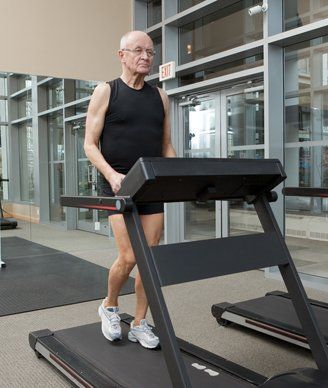Most Cancer Patients Reduce Physical Activity Despite Potential Benefits
Most patients with cancer decreased their physical activity levels following their diagnosis, in spite of the potential benefits associated with exercise, according to a new study.
Image © Luc Ubaghs

Most patients with cancer decreased their physical activity levels following their diagnosis, in spite of the potential benefits associated with exercise, according to a new study. Barriers to physical activity included fatigue, pain, and difficulty getting motivated.
“Many people associated cancer treatment with needing to rest, but we’re learning that moderate forms of physical activity can not only help patients feel better generally but also, in some cases, potentially improve their cancer outcomes,” said Sally A. D. Romero, PhD, of Memorial Sloan Kettering Cancer Center in New York, in a press release. She will present the new study at the American Society of Clinical Oncology (ASCO) 2017 Cancer Survivorship Symposium, held January 27–28 in San Diego.
The study included 662 cancer patients, with a mean age of 59.9 years; most were female (65%), white (81%), and overweight/obese (65%). The most common cancer in the study was breast cancer (32%), followed by lung/thoracic tumors (15%) and hematologic malignancies (15%). Most patients received chemotherapy (88%), radiation (53%), and/or surgery (53%).
Most patients were more than 12 months from their diagnosis (53%). Since that diagnosis, 75% reported decreasing physical activity levels, while 16% maintained similar levels and 4% increased their activity.
A multivariate analysis found several factors significantly associated with decreasing physical activity. This included receipt of chemotherapy, with an adjusted odds ratio of 3.54 (95% CI, 2.06–6.06), and having metastatic disease, with an adjusted OR of 1.64 (95% CI, 1.07–2.52).
The most common barrier to physical activity reported was fatigue (78%), followed by pain (71%), and difficulty getting motivated to exercise (68%) as well as difficulty remaining disciplined (65%). A bivariate analysis found that the presence of symptoms including pain, nausea, fatigue and others was significantly associated with decreasing physical activity levels, as were difficulty getting motivated, difficulty remaining disciplined, and sadness (P < .05 for all).
“The side effects of cancer treatment like fatigue and pain can be addressed relatively easily, but the other reasons patients aren’t exercising can be more complicated, and we need to focus on those as well,” Romero said. Expanding exercise programs tailored to the needs of cancer patients could help the issue, and interventions should target the barriers to exercise seen in this study.
ASCO expert Merry Jennifer Markham, MD, of the University of Florida in Gainesville, said it is important to shed light on the specific reasons that patients change their exercise habits so that interventions can be tailored. “For example, patients who were runners before their diagnosis might consider taking long walks instead,” she said. “It’s about tailoring the conversation and the exercise plan for each individual.”